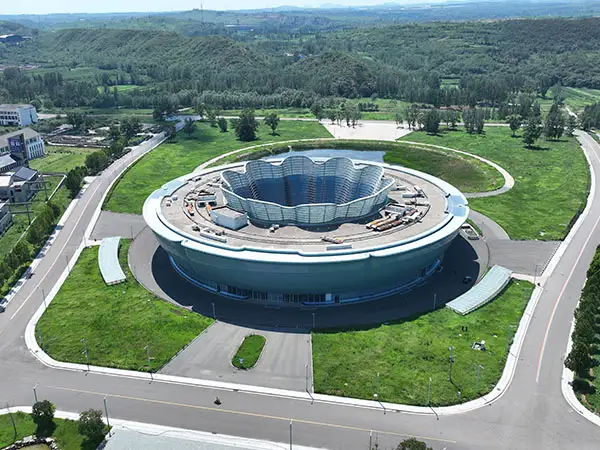Building Use:Museum
Area:20000 m²
Steel Usage:1150 t
Factory Structure and Project Features:Rigid Column + Curtain Wall
Project Challenges & Overcoming Process:There are many different types of components, which are difficult to process and require high precision.

A steel structure museum is a public institution dedicated to the exhibition of artifacts and art, where the primary load-bearing framework of the building is constructed from steel.
This means that instead of relying on traditional materials like reinforced concrete, masonry, or heavy timber for its skeleton, the building's strength, shape, and stability come from an interconnected system of steel columns, beams, trusses, and frames.
Steel is often chosen for museums not just for its structural capabilities but also for its aesthetic potential. It allows architects to create iconic, dynamic, and highly functional spaces that would be difficult or impossible to achieve with other materials. The structure itself often becomes a part of the architectural statement.
The choice of steel for a museum is driven by a unique set of performance features that are perfectly suited to the building's purpose.
1. Exceptional Span Capability & Column-Free Spaces
This is arguably the most important feature for a museum. Steel has a very high strength-to-weight ratio, allowing it to span long distances without needing intermediate support columns.
Performance Benefit: This creates vast, open-plan interior galleries. Curators have maximum flexibility to design exhibitions, accommodate large-scale artworks or artifacts (like airplanes, dinosaur skeletons, or massive sculptures), and manage crowd flow without visual or physical obstructions.
2. Design Flexibility & Architectural Expression
Steel can be fabricated into nearly any shape—curved, angled, or straight. It can be used to create soaring atriums, dramatic cantilevers, and complex geometric forms.
Performance Benefit: This allows architects to design landmark buildings that are attractions in themselves. The building's architecture can reflect the museum's theme (e.g., modern art, industrial history) and create a memorable visitor experience. The structure becomes a piece of sculpture.
3. High Strength-to-Weight Ratio
Compared to concrete, a steel frame is significantly lighter for the same amount of strength.
Performance Benefit: This reduces the load on the building's foundation, which can lead to cost savings, faster foundation work, and make it possible to build on sites with less-than-ideal soil conditions. It also enables features like dramatic overhangs that seem to defy gravity.
4. Speed of Construction and Precision
Steel components are prefabricated off-site in a controlled factory environment to exact specifications. They are then transported to the site and bolted or welded together.
Performance Benefit: This results in a faster, more predictable construction timeline with less on-site waste and disruption. The precision of prefabrication ensures a high-quality finished structure, which is crucial for a building designed to last for centuries.
5. Durability and Longevity
Steel is a highly durable material that does not rot, warp, or get damaged by pests. When properly protected with coatings (like paint or galvanization), it is highly resistant to corrosion.
Performance Benefit: A steel structure provides a stable and secure envelope to protect priceless and irreplaceable collections from the elements for generations, with relatively low long-term maintenance requirements for the core structure.
6. Seismic Performance
Steel is a ductile material, meaning it can bend and deform under extreme loads (like those from an earthquake) without fracturing. Steel structural systems can be engineered to be incredibly resilient.
Performance Benefit: In earthquake-prone regions, a steel structure provides superior safety for visitors, staff, and the invaluable collection housed within the museum.
7. Sustainability
Steel is one of the most recycled materials on earth. Modern structural steel often contains a high percentage of recycled content, and at the end of the building's life, the steel frame can be disassembled and almost 100% recycled.
Performance Benefit: This helps the museum meet its environmental and sustainability goals, which is increasingly important for public institutions seeking funding and positive community engagement.
8. Easy Integration of Services
The open framework of a steel structure makes it easy to integrate essential building systems, such as HVAC (for climate control), electrical conduits, security systems, and specialized lighting.
Performance Benefit: Museums require highly sophisticated climate and light control to preserve artifacts. A steel frame simplifies the routing of these complex systems, making them easier to install, access, and maintain.

Create the greatest value for customers
Provide the best quality products and services
+8618800767079
info@hcggsteel.com
No.1 Shuangxiang Road, Luoxin Industrial Park, Luoyang City